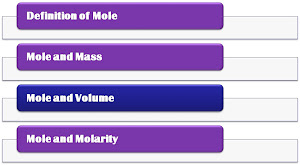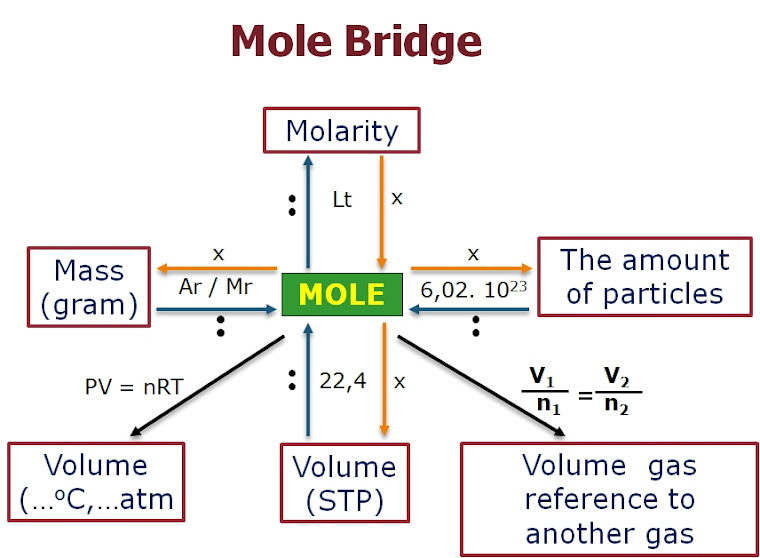Mole and Mass
a . Atomic Mass
Atoms are so tiny that even the smallest speck of dust visible to the naked eye contains about atoms. Thus, the mass of a single atom in grams is much too small a number for convenience, and chemists therefore use a unit called an atomic mass unit (amu).
You can find the atomic mass of any elements in the periodic table. This calculation just to help you to understand how the atomic mass is yielded. The value of using atomic masses is that it allows us to count a large number of atoms by weighing a sample of the element. For instance, we can calculate that a small speck of carbon weighing 1.00 mg contains carbon atoms:
b. Molecular and formula Mass
Mass ratios are determined by using the molecular masses (also called molecular weights) of the substances involved in a reaction. Just as the atomic mass of an element is the average mass of the element’s atoms, the molecular mass of a substance is the average mass of the substance’s molecules. Numerically, molecular mass (or more generally formula mass) equals the sum of the atomic masses of all atoms in the molecule.
c. Molar mass
Avogadro’s number of formula units of any substance—that is, one mole—has a mass in grams equal to the molecular or formula mass of the substance.
Given the following example :
So, atomic mass of Carbon is :
You can find the atomic mass of any elements in the periodic table. This calculation just to help you to understand how the atomic mass is yielded. The value of using atomic masses is that it allows us to count a large number of atoms by weighing a sample of the element. For instance, we can calculate that a small speck of carbon weighing 1.00 mg contains carbon atoms:
b. Molecular and formula Mass
Look at the video below!
Mass ratios are determined by using the molecular masses (also called molecular weights) of the substances involved in a reaction. Just as the atomic mass of an element is the average mass of the element’s atoms, the molecular mass of a substance is the average mass of the substance’s molecules. Numerically, molecular mass (or more generally formula mass) equals the sum of the atomic masses of all atoms in the molecule.
c. Molar mass
The mass of one mole of atoms of a pure element in grams is numerically equal to the atomic weight of that element in atomic mass units. This is also called the molar mass of the element; its units are grams/mole, also written as g/mol or g mol-1.
Avogadro’s number of formula units of any substance—that is, one mole—has a mass in grams equal to the molecular or formula mass of the substance.
Given the following example :
Worked example
How many moles of atoms does 136.9 g of iron metal contain?
Plan
The atomic weight of iron is 55.85 amu. This tells us that the molar mass of iron is 55.85 g/mol, or that one mole of iron atoms is 55.85 g of iron. We can express this as either of two unit factors:

Because one mole of iron has a mass of 55.85 g, we expect that 136.9 g will be a fairly small
Because one mole of iron has a mass of 55.85 g, we expect that 136.9 g will be a fairly small
number of moles (greater than 1, but less than 10).













